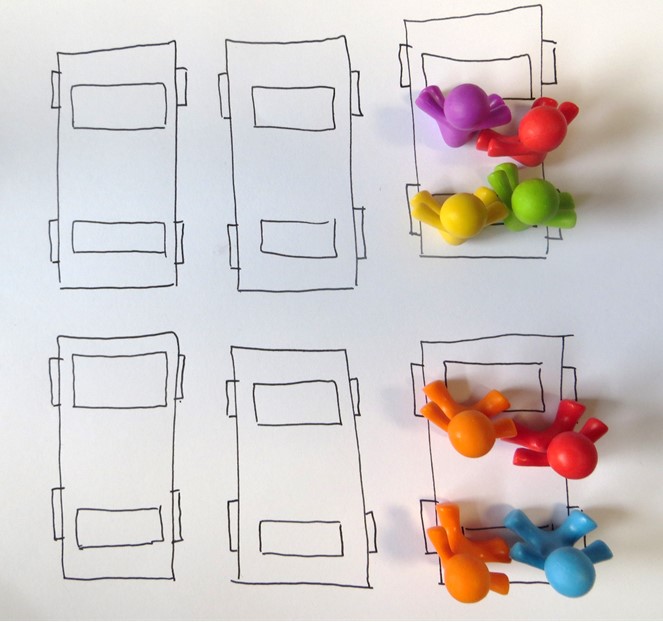The purpose of this activity is to support students applying their multiplicative fact knowledge to situations that involve repeated subtraction (quotative division).
- Individual objects of interest and relevance to students. This lesson uses family counters.
 Revisit the meaning of multiplication facts, like 6 x 4 = 24, by asking students to create a physical model of the fact using counters.
Revisit the meaning of multiplication facts, like 6 x 4 = 24, by asking students to create a physical model of the fact using counters.
Look for students to form six sets of four counters. This shows understanding of the structure of the factors and recognition of the product as a combined amount.
- Discuss the meaning of the symbols in the equation.
What does 6 mean in this equation? (It represents the number of equal sets)
What does 4 mean in this equation? (It represents the number of counters in each set)
What does 24 mean? (It represents the total number of counters)
What does the x symbol mean? (of)
What does = mean? (Same quantity on both sides, a balance).
If appropriate to your students' understanding, you might introduce relevant to reo Māori kupu, such as whakarea (multiply, multiplication) and whakawehe (divide, division).
 Pose a related equal sharing/subtraction problem that is set in a relevant real-life context.
Pose a related equal sharing/subtraction problem that is set in a relevant real-life context.
There are 24 people. Four people are going in each car. How many cars are needed?
Look for students to see the connection between 6 x 4 = 24 and the equal subtraction problem. If not, physically form ‘cars’ of people until 24 people are allocated.
- Record multiplication and division equations for the problem: 6 x 4 = 24, 24 ÷ 4 = 6.
Encourage students to recognise that 4 plays a special role in both equations. They should recognise that this number is present as the multiplicand in the multiplication equation, and as the divisor in the division equation.
- Pose similar related multiplication and division problems, such as:
- 8 x 5 = 40, 40 ÷ 5 = 8 (40 people put into teams of five)
- 7 x 10 = 70, 70 ÷ 10 = 7 (70 people put into teams of ten)
- 5 x 3 = 15, 15 ÷ 3 = 5 (15 people put into teams of three)
- 10 x 4 = 40, 40 ÷ 4 = 10 (40 people put into teams of four).
Allow students to work in groupings that will encourage peer scaffolding and extension. Some students might benefit from working independently, whilst others might need further support from the teacher. Consider also the different means of action and expression (e.g. verbal, written, digital, physical) that your students might use to demonstrate their thinking.
- Progress from using physical models to working with the stories alone with support from equations.
Next steps
- Increase the level of abstraction by covering the materials or using diagrams without visible numbers of people counters, then progressing to stories and equations only. Increase the number of people in the problem to make multiplicative strategies more advantaged.
- Ask anticipatory questions like, “if I know 6 x 10 = 60, what other ‘people in teams’ problems can I solve?”. Encourage students to see that 60 people put into teams of six or ten, can be extended to find the number of teams of five or three.
- Extend the difficulty of the divisions so students apply a full range of their basic multiplication and division facts.